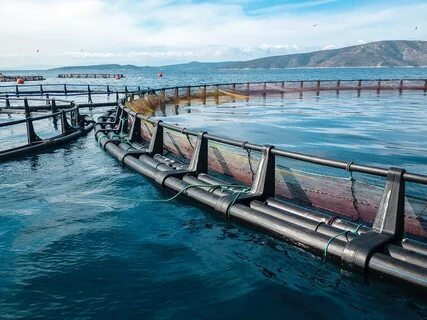Mariculture | marine aquaculture | ocean farming | sea farming | marine farming | sea aquaculture | ocean aquaculture

TABLE OF CONTENTS
Reading time:
Last modified:
2022-10-26 00:00:00
1. Synonyms, etymology, translation, definition, examples and notes
1.1. Subject field:
- Mariculture. (Hierarchy:
- Fisheries >
- Aquaculture >
- Mariculture )
1.2. IPA transcription and prononciation for mariculture:
- Mariculture: /ˈmærɪkʌltʃə(r)/ or /ˈmærɪkʌltʃər/
- sea farming: /siː ˈfɑːmɪŋ/
- ocean farming: /ˈəʊʃən ˈfɑːmɪŋ/
- marine farming: /məˈriːn ˈfɑːmɪŋ/
- marine aquaculture: /məˈriːn a·kwuh·kuhl·chuh/
- sea aquaculture: /siː a·kwuh·kuhl·chuh/
1.3. Synonyms of mariculture:
There are 6 international synonyms for mariculture. These include:

Graph 1 : mariculture, marine aquaculture, ocean farming, sea farming, marine farming, sea aquaculture, ocean aquaculture - Google ngram extract ( graph of term etymology and evolution. Source: Google ngram )
1.4. Etymology of Mariculture:
Marine aquaculture, also known as ocean farming, mariculture, sea farming, marine farming, sea aquaculture, or ocean aquaculture, are used in the sector of fisheries to mean the same concept. These terms all originated around the 20th century.
The very first term, mariculture, originated in the 1950s and became more popular in the 1960s, from then, mariculture became the most popular of all synonyms to date. A second synonym, marine aquaculture, emerged after mariculture in the 1960s. Two other snonyms, sea farming and marine farming, emanated later on in the 1970s and are widely used in many parts of the world. The other internationally less significant synonyms (sea aquaculture, ocean aquaculture, ocean farming) originated alongside the four above-mentioned terms.
1.5. French translation of mariculture:
Mariculture can be translated into French as:1.6. Definition of mariculture in fisheries:

1.7. Plural of mariculture:
Maricultures; marine farmings; ocean farmings; ocean aquacultures; marine aquacultures;
1.8. Usage example of mariculture:
Decree No. 95/413 /PM of 20 June 1995 to lay down certain conditions for the application of fisheries regulations., Chapter I, article 2, paragraph 6 : " Mariculture: the development of sea water for the production of animal species, such as fish, molluscs and crustaceans. "
1.9. Notes on mariculture
Mariculture/sea farming/ocean farming should not be confused with aquiculture, which involves culture in fresh or brackish water.
Development of Mariculture (sea farming):
Mariculture started by catching wild juveniles and feeding them in a controlled environment. As more knowledge was gained, the degree of control with the production process increased and the farmers increased their influence on growth and reproduction.
Types of mariculture by activity intensity:
The degree of control of the production process is often categorized by the intensity of the farming operation. Four main activity intensity classifications are recognised: traditional, extensive, semi-intensive, and intensive mariculture (Quentin et al., 2010).
Traditional and extensive mariculture:
Simplest form of culture involving protection of the stock to improve survival rates of wild juveniles, where no fertilizer or supplementary feed is added and the production from the pond depends entirely on the primary production. The primary production in turn depends on sunlight and nutrients available in the water and soil. Since nutrients are not fed into the culture, the stocking density and recurrent costs will therefore have to be low. In the case of mullets, milkfish and other herbivores or penaeids it is essential that the water level be maintained between 35 and 40cm in the general platform area of the pond to encourage algal growth on the pond bottom for the organisms to feed upon. If the water is deeper, the light intensity that reaches the bottom will not suffice to promote algal growth.
An example of an extensive method of mariculture used around the globe is mussel farming, whereby the farmer provides a rope or a stake for the juveniles to attach to and does some culling so that the density does not get too high, but actually leaves the mussels to grow without further interference.
Semi-Intensive mariculture:
A form of sea culture involving increased production by stocking at a slightly higher density and adding fertilizers (organic or inorganic) to increase primary production within the pond and in turn increase the harvest from the pond.
Intensive mariculture:
A form of mariculture involving higher stocking rates, increased depth of water (>40cm depth), increased supplementary feed with or without the use of fertilizers. Water depth in the rearing structure is greater than in the former sea farming types because the food for the cultivated organisms is not dependent entirely on primary production within the pond.
Mariculture farming environments
Below is a list of 7 sea farming / mariculture structures and culture systems:
- Marine ponds: ponds to grow prawns and some finfishes either by tide-fed systems or by pumping in seawater at periodic intervals into it.
- Tanks (broodstock, larval, grow out culture tanks): well-aerated tanks with regular exchange of water to keep the dissolved oxygen levels high and remove wastes.
- Marine sea cage / floating cage: High density, low volume system with maximum production in unit area than in any other culture systems, often used to farm salmons, breams, snapper, seabass, grouper
- Integrated multitrophic aquaculture (IMTA) and polyculture: Polyculture and integrated aquaculture are methods of raising diverse organisms within the same farming system, where each species utilizes a distinct niche and distinct resources within the farming complex.
Recirculating aquaculture systems (RAS): closed and low discharge systems which have concerns for water conservation and reduced waste discharges. - Long line farming of bivalves: a non-fed culture system for bivalves.
- Marine raceway: large concrete tanks having higher flow rates than ponds are raceways which are used for farming of many fish species.
- Marine hatcheries: land-based seed production units set up in a protected environment to effect artificial reproduction.
Fishery terminology records for Mariculture
LEAVE A COMMENT



 Linkedin
Linkedin share
share tweet
tweet